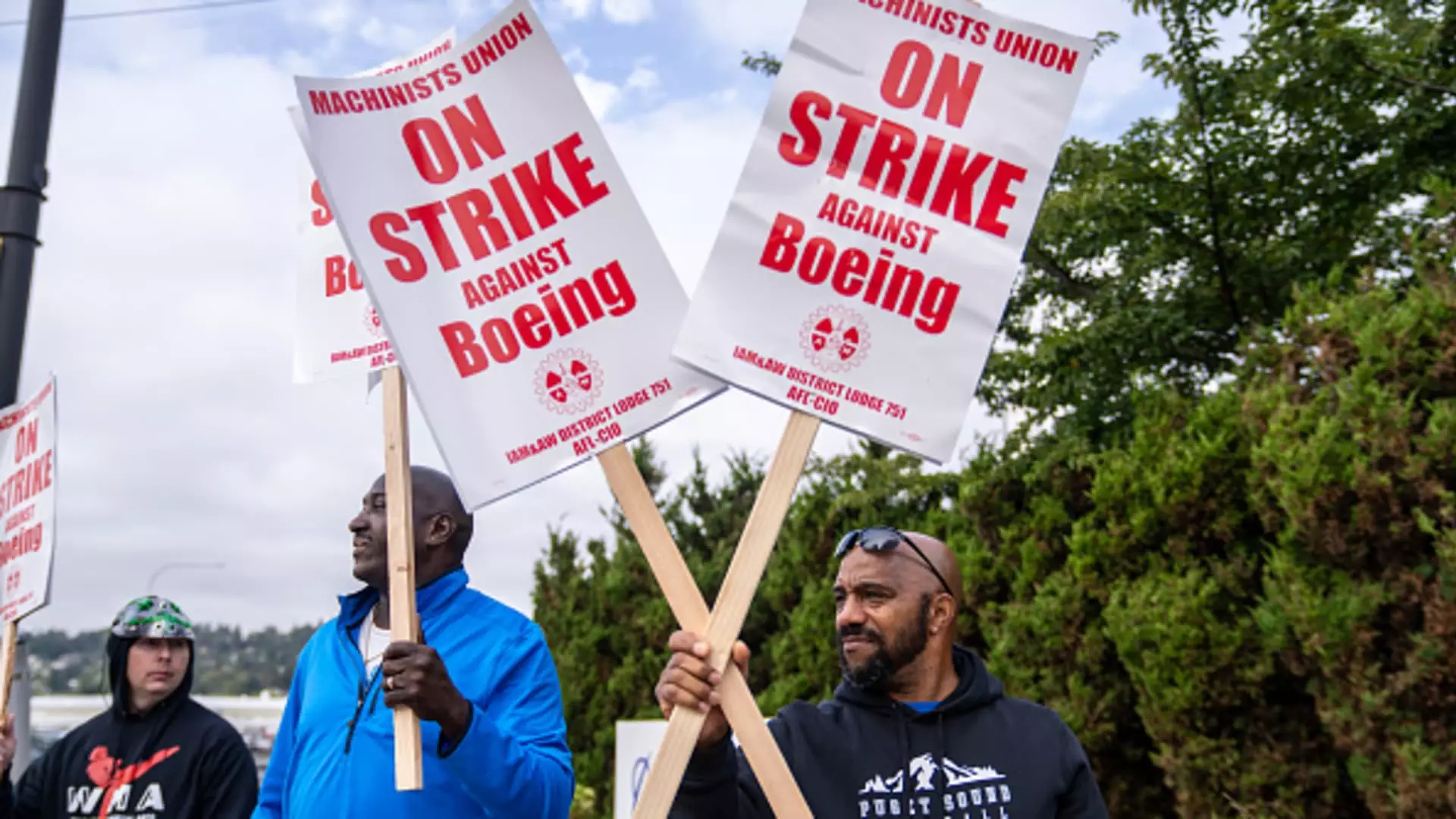In the heart of the Pacific Northwest, Boeing is facing a significant crisis as over 30,000 machinists continue their strike, a move fueled by significant dissatisfaction with a proposed contract. This strike has not only intensified ongoing tensions between the company and its workforce but also placed immense pressure on the newly appointed CEO, Kelly Ortberg, who had been brought in to navigate Boeing through its troubled waters. This article delves into the complexities of Boeing’s current labor dispute, financial situation, and the implications of these issues for the wider aerospace industry.
Since the strike commenced following a staggering rejection of a tentative contract offer, Boeing has found itself mired in a myriad of challenges. The company’s financial position is deteriorating rapidly, with estimates indicating that the ongoing strike may cost Boeing upwards of $1 billion each month. This situation comes on the heels of multiple crises, including production issues surrounding the 737 Max and a series of reputation crises stemming from two tragic crashes linked to the aircraft. The combination of these factors has left the manufacturer in a precarious position, fueling public speculation about its future.
The impasse between Boeing and the machinists union is fraught with uncertainty. Efforts at federally mediated negotiations recently failed, further complicating the situation. While both sides express a desire to return to the negotiating table, deep-rooted disagreements about the terms of a new contract loom large. On one hand, the company is accused of negotiating in bad faith, while on the other, its officials are left grappling with a workforce that feels undervalued and unprotected.
The machinists’ union has presented a range of demands that highlight the growing discontent among workers. One of the prominent issues is the reinstatement of a traditional pension plan—a measure some experts consider unlikely given the financial pressures Boeing is under. Harry Katz, a labor relations expert, has warned that any resolution to this strike demands a substantial increase in Boeing’s offers, projecting that the work stoppage could persist for another two to five weeks if compromises are not reached.
In response, Boeing has attempted to navigate the murky waters of labor relations while preparing for significant workforce reductions. The company announced intentions to cut around 10% of its global workforce, indicating that layoffs aren’t limited to unionized employees but will also affect non-union staff, such as executives and managers. This approach raises questions about the long-term sustainability of its business model when the company is challenged not only by external competition but also by internal strife.
Boeing’s financial health has been shaky since the onset of the pandemic, compounded by production delays and rising operational costs. As of the latest financial reports, the company anticipates a staggering loss of nearly $10 per share in the latest quarter, with an additional $5 billion in charges looming over both its commercial and defense sectors. The company’s struggles are underscored by a dramatic 42% drop in stock prices this year, the steepest decline the giant has seen since 2008.
During this turmoil, the need for cash flow becomes critical. Analysts have speculated that Boeing may need to raise as much as $15 billion to stabilize its operations. But the company is caught in a bind, needing to cut costs while simultaneously keeping its production lines running. With unfulfilled orders and delays in aircraft deliveries—especially regarding the much-anticipated 777X—investors are understandably concerned.
The ramifications of Boeing’s internal issues extend beyond its walls, threatening the stability of the entire aerospace supply chain. Suppliers like Spirit AeroSystems have begun contemplating potential furloughs for employees, indicative of the broader impact that disruptions at Boeing can have on the industry. The specter of financial instability looms large, and the possibility of further job losses in the sector could become a reality if Boeing’s situation does not improve.
Boeing stands at a pivotal moment in its storied history. The convergence of labor disputes, financial instability, and a pressing need for operational efficiency presents an array of challenges that the company must address. As the strike continues and negotiations stall, the question remains whether Boeing can navigate through this crisis. The choices made in the coming weeks will not only define the company’s future but also potentially reshape the landscape of the aerospace industry as a whole. CEO Ortberg must devise a strategy that repairs relations with employees while simultaneously stabilizing a faltering financial outlook. The successful resolution of these issues is crucial for restoring Boeing’s reputation and ensuring its long-term viability.


Leave a Reply